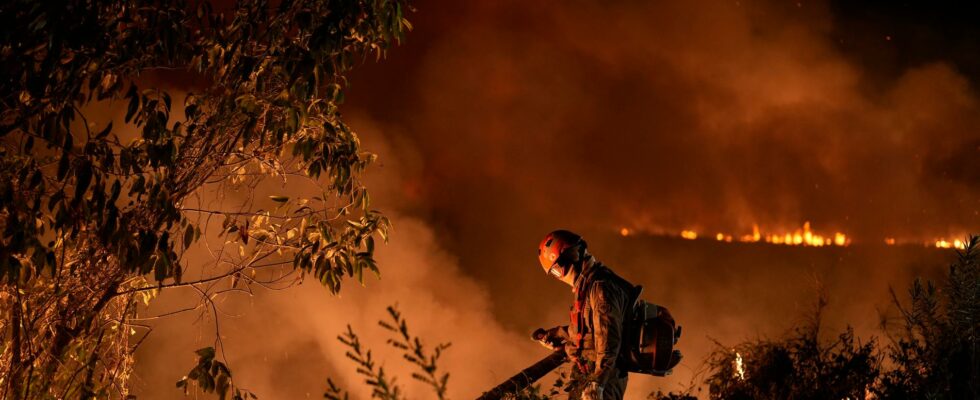unsaveSave
expand-left
full screen
chevron-rightnext
Fighting a forest fire in the state of Mato Grosso in Brazil last year.
1 / 2Photo: Andre Penner/AP/TT
The planet is headed for at least 2.5 degrees of warming, according to hundreds of climate scientists. Many also believe that it is rather about 3 degrees.
A “semi-dystopian” future of famine, conflict and mass displacement is to be expected as climate change leads to more extreme heat waves, fires, floods and storms. This is the opinion of some of the researchers who responded to a survey from The Guardian.
843 researchers and editors who have worked with reports from the UN climate panel IPCC since 2018 received the survey. 380 responded and almost 80 percent of them believe that the world is heading for a global warming of at least 2.5 degrees this century, compared to pre-industrial times. Almost half believe in at least 3 degrees of warming.
The Paris Agreement’s goal is to keep global warming below 2 degrees, preferably 1.5 degrees, to mitigate the most devastating effects of climate change. The world has already warmed 1.2 degrees and only 6 percent believe that the 1.5 degree target can be reached.
Worse effects
The effects get worse for every tenth of a degree that the Earth warms.
At 1.5 degrees of warming, more intense storms and heat waves and an increased risk of mass death among corals await. At 2 degrees, a larger proportion of the population is exposed to deadly extreme weather and increases the likelihood of irreversible tipping points in the climate.
– When you raise the average climate, you will also increase the extremes. There will be more extreme heat waves and more extreme precipitation, says Gunilla Svensson, professor of meteorology at Stockholm University, to TT.
– It is difficult to say exactly how much worse it will be at 3 degrees warmer, compared to 2.5 degrees, but we see big problems with what we have to deal with already now.
At 3 degrees of warming, the probability that climate-related events will have cascading effects around the world increases, such as increased food prices, refugee flows and shortages of food and water, writes The Guardian.
Rising seas
Cities such as Miami, Shanghai, Rio de Janeiro and The Hague are threatened by rising seas.
– The effects of warming occur on different time scales. Some things are discovered quickly, such as the average temperature increasing and the extremes intensifying, says Svensson.
– Other things are going slower, like the melting of the ice caps. This results in an increase in sea level that increases the risks in the world’s coastal areas.
The world is trying to adapt. The question is whether it goes fast enough, says Svensson.
– The best thing would be to get to the root of the problem and stop emitting carbon dioxide so that we can limit warming. The consequences will be greater and more difficult to deal with as the planet gets warmer.
FACTS The Paris Agreement
The Paris Agreement is a global climate agreement that the world’s countries agreed on in December 2015. It formally entered into force in November 2016.
According to the agreement, global warming must be kept well below 2 degrees compared to pre-industrial levels, with the ambition to limit it to 1.5 degrees. This must primarily be done through reduced emissions of greenhouse gases.
The parties to the agreement must gradually tighten their commitments and renew or update these every five years.
Read more
